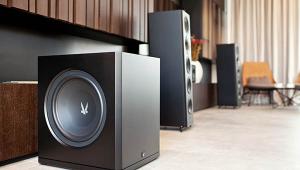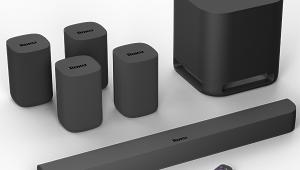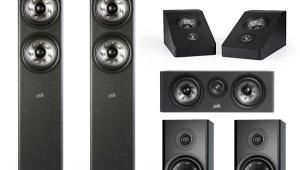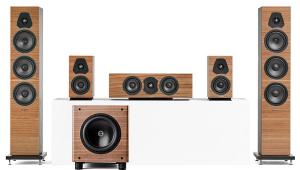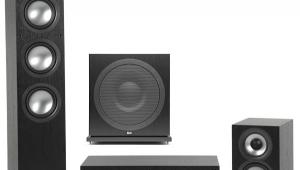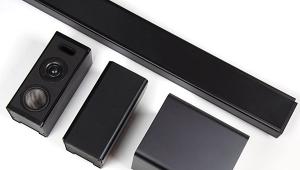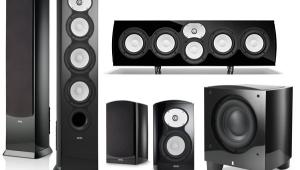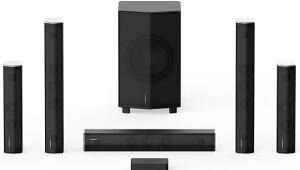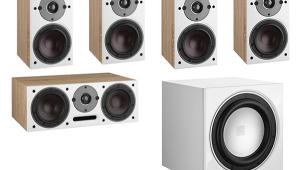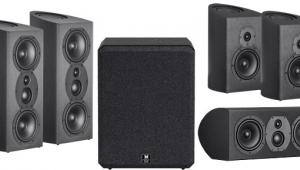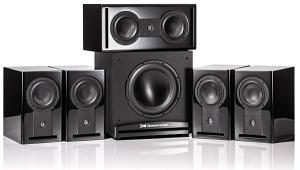Seems like Revel tends to roll off the bass extension of their speakers, with the assumption that people will use subs. If you don't use subs, will the F228Be offer enough bass extension to be used without a sub?
Revel PerformaBe Surround Speaker System Review Page 2
With the subwoofers fired up and the mid-bass room issue sorted out, the overall sound on stereo music was now full-bodied, open, and airy, with just the right amount of detail. The delicate fingering of guitar strings on Pat Metheny's cover of The Beatles' "And I Love Her" (auditioned from DALI's compilation CD Vol.3, not commercially available) was precisely rendered, as was the decidedly more hard-driving guitar work on Nils Lofgren's Acoustic Live concert CD.
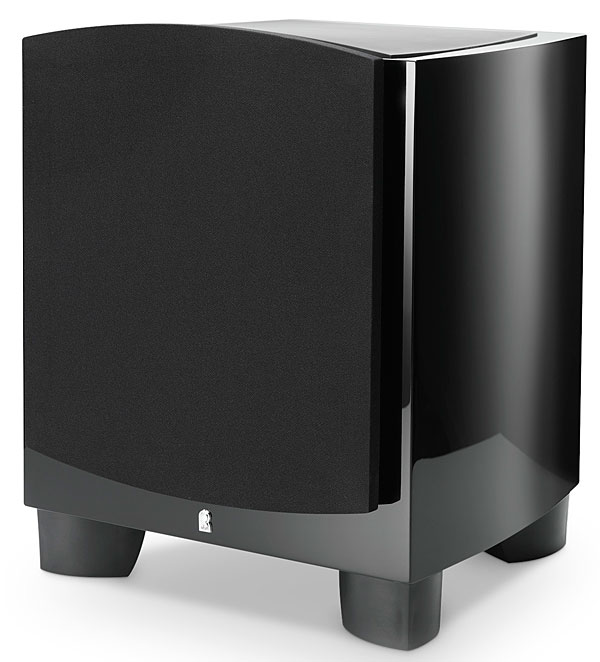
The Revel tower's coloration-free midrange meant that vocals were also handled in a solid manner. Loreena McKennitt's singing on the Nights from the Alhambra concert was no less irresistible than the work of Danish jazz vocalist Sinne Eeg. For male voices, Leo Kottke's oddly growling singing, while not as compelling as his guitar work, hit just the right notes on "Why Can't You Fix My Car?" from My Father's Face (listen for the subtle bicycle bell at the end!). Lofgren's voice on the CD mentioned above is also an acquired taste, though the Revels didn't care and presented it flawlessly.
Movies Performance
Moving to movies on a 5.2 system, I watched the animated musical Sing. Yes, all of this film's characters are talking, singing animals, but you quickly accept that and, apart from a few action sequences handled with ample weight, "sing" is what this soundtrack does. The songs are solid and the vocal performances are often outstanding, with the music ranging from short snippets you wish would continue to full-length performances, particularly a terrifically entertaining "let's put on a show" final act (a great demo piece for those who've had enough of explosions!). All of this is beautifully recorded, and the Revels handled it with convincing ease.
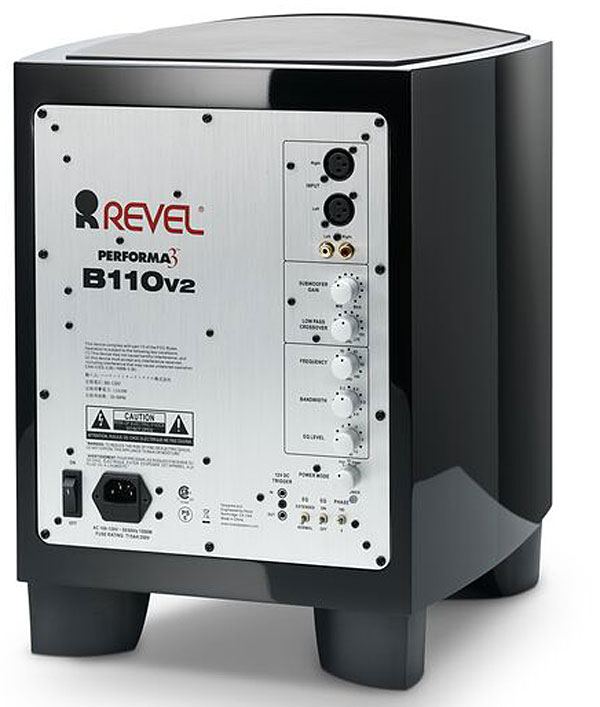
While Battleship wasn't exactly a franchise-creating hit when it landed in theaters in 2012, it doesn't lack for chaotic action. There's almost nonstop mayhem, from big ships groaning through the Pacific waters to the rumble of big guns as the Navy battles aliens a bit less cuddly than E.T. The bass crushed it here, but let's be real for a minute. Two small subs with 10-inch drivers will never be confused with a few 18-inch monsters in pressurizing a space the size of mine. But the Performa B110V2s offered plenty of convincing weight without making rude mechanical noises unrelated to the onscreen action—a sign of well-designed overload protection. Some of the action did sound a little harsh, but I suspect the system was merely delivering the clash of ripping metal inherent in this loud and busy soundtrack.
Unlike Battleship, Blade Runner 2049 has been almost universally praised as a near-masterpiece, and that goes double for its soundtrack. Yes, it too can be over the top, but in a fully appropriate way. Blade Runner 2049 clearly revealed what the Revels can do with the best material, and what they did was wildly impressive. The opening chapters were underlined by a deep, thrumming bass from both the sound effects and the synthesized music score. If that bass didn't quite rattle my walls, it did something equally important—fully support the film while not distracting from the onscreen action. The atmospheric soundtrack engulfed me in virtually every scene, even within the "limitations" of a basic 5.2 setup without Atmos or other enhancements. Dialogue coming from the C426Be center speaker was always intelligible and never obviously colored in any way, and the three front speakers blended seamlessly.
System Variations
The Revel Performa M126Be bookshelf speaker also performed exceptionally well in the surround positions, though far less pricey options (including other speakers from Revel) would reduce the system cost significantly. Would I lose anything by stepping down in price for the surrounds? To check, I tried a pair of my (discontinued) Revel Concerta bipole/dipole speakers for that task. Did they perform equally well for surround duties in my room? Yes, they did. While a front-to-back timbre match of the surrounds to the fronts is recommended for surround music where some instruments are actually positioned behind the listener, it's less so for movies, where a front-to-back timbre match, while useful, isn't critical.
Another option for reducing the cost of a PerformaBe system would be to employ a pair of M126Bes as the left and right front speakers. I spent a few listening sessions using them that way, on stands, in place of the of the F226Bes. I used those Concertas as surrounds for this added test, (I didn't have four M126Bes on hand!), with the Revel center and subwoofers remaining in place and engaged.
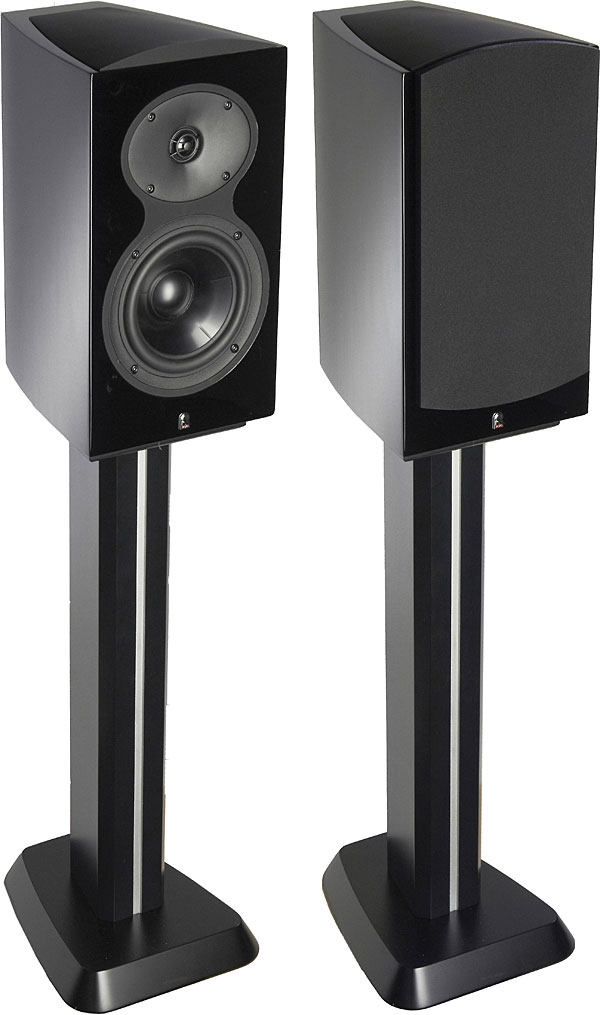
Since the mid-bass emphasis triggered by my room and listening position still remained with the M126Bes up front, some compensation similar to what I used for the M226Bes was also needed. To switch things up, I first employed the Audyssey room correction offered by my Marantz pre-pro. Significantly, it features the Marantz Editor App, which gives the user a choice on how high to set the compensation. Using this option, I limited Audyssey correction to a 300-Hz maximum threshold so that the only electronic EQ for this test would be from the mid-bass down. I also obtained best measured results by crossing the M126Bes over to the subwoofer at 110 Hz (vs. 90 Hz for the F226Bes).
The performance of the system as configured as above was superb on a wide range of music. From sparkling highs to deep, powerful bass, this setup offered some of the best sound I've yet heard in my room. Was it better than my previous F226Bes-plus-subs setup? No, but with music it was arguably every bit as good.
The results were different with movies, however. Watching Blade Runner 2049 with Audyssey engaged, the balance was a little brighter than I recalled with the F226Bes. Switching Audyssey off and reverting to the bass control adjustment method I had used with the F226Bes produced better listening results, though not as measurably uniform in the mid-bass as it was with Audyssey engaged.
When I went back to using the F226Be towers as the left and right fronts, I found the overall sonic bubble to be better integrated and enveloping than with the M126Bes. Did the closer similarity of the F226Be's driver complement relative to the C426Be center improve the overall sonic blend across the front? Perhaps. But while I preferred the F226Be towers in that position, the differences weren't at all dramatic when I substituted the smaller Revel bookshelves.
Conclusion
I can enthusiastically recommend this Revel PerformaBe system for a big room like mine—as long as a subwoofer or two is used. My only reservation here involves cost. Revel's B110V2 subwoofer, while superb in the right environment, is small and expensive. There are excellent subwoofer alternatives that can be had for far less.
For example, I still had two SVS SB-3000 subs ($2,200 a pair in a gloss black finish) on hand during my test that were used for the S&V subwoofer setup article referenced earlier. The SB-3000 is compact but slightly larger than Revel's B110V2, with a squarish and less fashionably curvy design. But it offers a 13-inch driver and much more extensive setup controls, all wirelessly accessible via a smartphone app (vs. manual controls on the Revel). In a brief trial with the Revel system, the SB-3000 pair went deeper than the B110V2s, though this advantage was small with most material. Otherwise, I found the SVS and Revel subs to be equally good performers when properly set up.
I offer this observation, as well as the earlier one about using less pricey speakers than the M126Be bookshelf as surrounds, not to dissuade anyone from buying an all-PerformaBe system. It's just that Revel's PerformaBe speakers, particularly the F226Be towers and C426Be center, are so impressive that it would be a shame to drop them from your wish list simply because the subs and surrounds push total system price into a range you can't contemplate. But whether you elect to go the full PerformaBe route or otherwise, you'll be assured of an exceptionally rewarding listening experience with both music and movies.
- Log in or register to post comments


It seems to me that would be the case if he had to turn the bass down to -6, as he commented that this system seems to exaggerate a bass push. Were the speakers appropriately broken in? I have to ask because I wouldn't expect to have to make that kind of downward bass adjustment to top of the line Revels.
While I can understand using middling audio equipment on one hand, it seems to me the review might have been more telling had he used more price appropriate equipment. To me, I don't think you're going to pair a B bucket amp and a Marantz preamp to a $20k speaker system. I would have chosen something like an AVR 60 and the Parasound A51, which together gets you Anthem's award winning room correction. And I think is much better than what he used. With that in mind, you wouldn't have had to contend with an inferior Audyssey, which may have played a factor in the review. I didn't get a real sense of speaker greatness until the surprise at the end. Based on what I read, there would be no way I would pluck down $20k for that system- no way.

Revel's Be226 are actually a fairly priced, considering they are true hi-fi speakers. However the subs are overpriced considering their performance level. Additionally the Be126 are overkill for surround speakers, as such your observations on replacement subs and surrounds are completely valid.

Time for TJN or AG to review the Performa top model F328Be :-) ......


TJN or AG could review the Revel Performa F328Be and the NAD M33 together, and evaluate whether the built-in Dirac Live of M33 can modify/enhance the bass frequencies of the F328Be, without the assistance of separate subwoofers, in their listening rooms :-) ........
